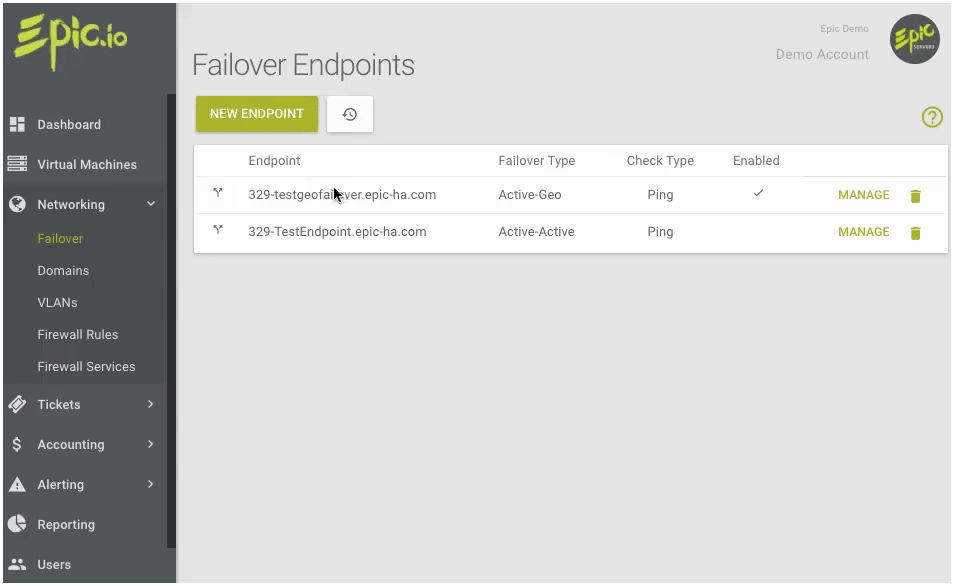Failover Services
Your content is always live with automated rerouting including active-active failovers, active-passive failovers, and Geo DNS.
Your content is always live with automated rerouting including active-active failovers, active-passive failovers, and Geo DNS.

If you’re not using Epic’s failover service, you are leaving your business dangerously susceptible to invisibility. Epic’s active failover ensures that your site or web application is immune to outages. When you have a system for Failover, you are ensuring that there is no single point of failure. The experience is seamless, and your users won’t know the difference if there is a failure. Epic’s failover services automatically detect when an outage occurs, and fluidly reroutes traffic to the next best endpoint. There are three different types of failovers to choose from: Active-Passive, Active-Active, and Geo DNS.
An active-passive failover is when one server responds to network requests while the failover servers lie idle. On failover, the secondary server steps in and takes over for the malfunctioning primary. Failback is not required but may be done to restore back to the original primary server. When clients connect to a 2-node cluster in active-passive configuration, they only connect to one server. In other words, all clients will connect to the same server. It's important that the two servers have exactly the same settings (i.e., redundant).
An active-active failover is when more than one server works together, splitting the workload. When the primary fails, other servers in the cluster take over the total load. On failback, the primary server takes back its load from the other server(s) to resume normal procedures. For the high availability cluster to operate seamlessly, it's recommended that the two nodes be configured for redundancy. In other words, their individual configurations/settings must be virtually identical.
Geo DNS gives you the ability to route requests to your website or application based on the user’s location. Each server in the cluster provides the same service but only responds to requests from its region for speed and efficiency. When used with a failover, if a server in a certain location goes down for any reason, the failover will automatically direct users to the primary server until failback takes place. If more than one server is managing requests from one region, the requests will alternate, or round-robin the instances serving that region. If one goes down, the others step up to handle the extra requests.